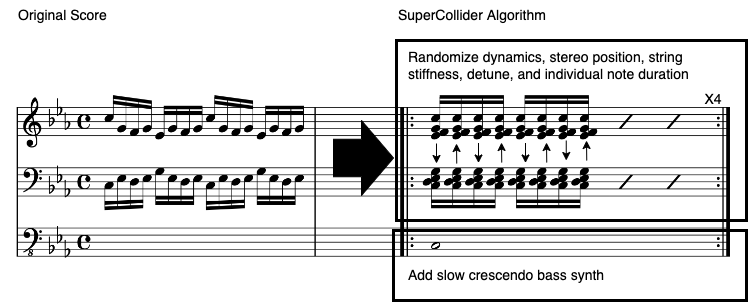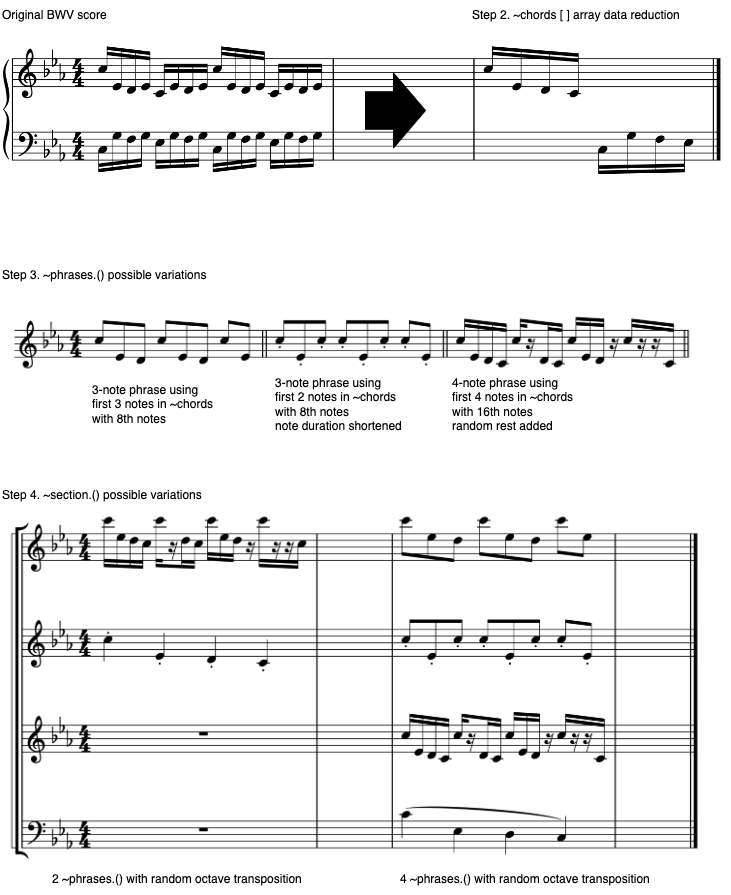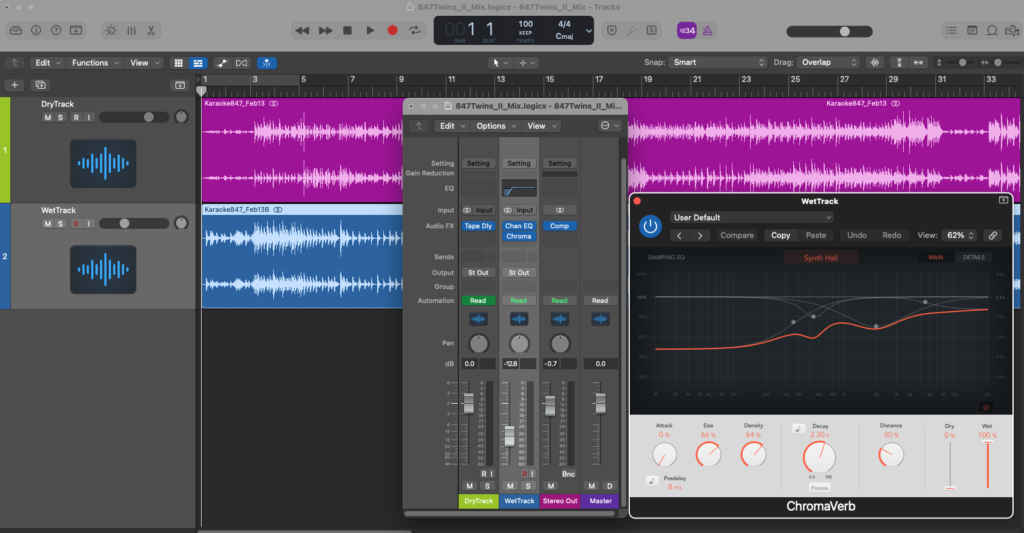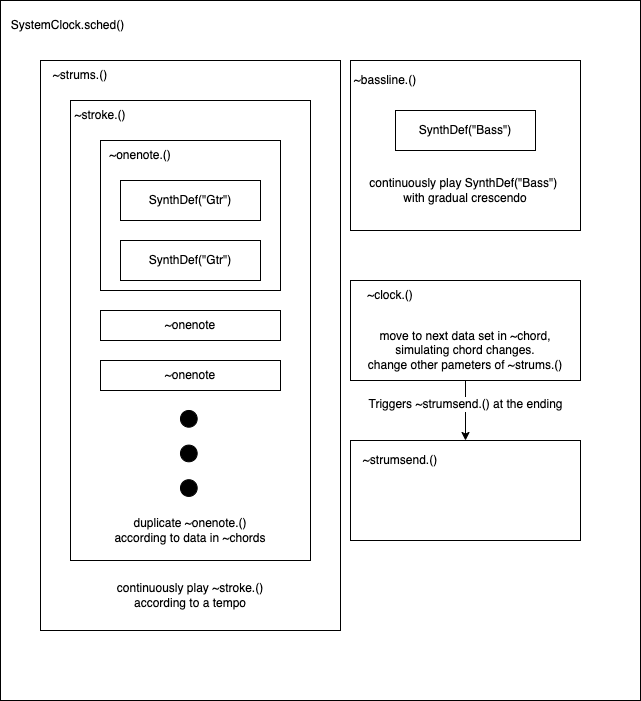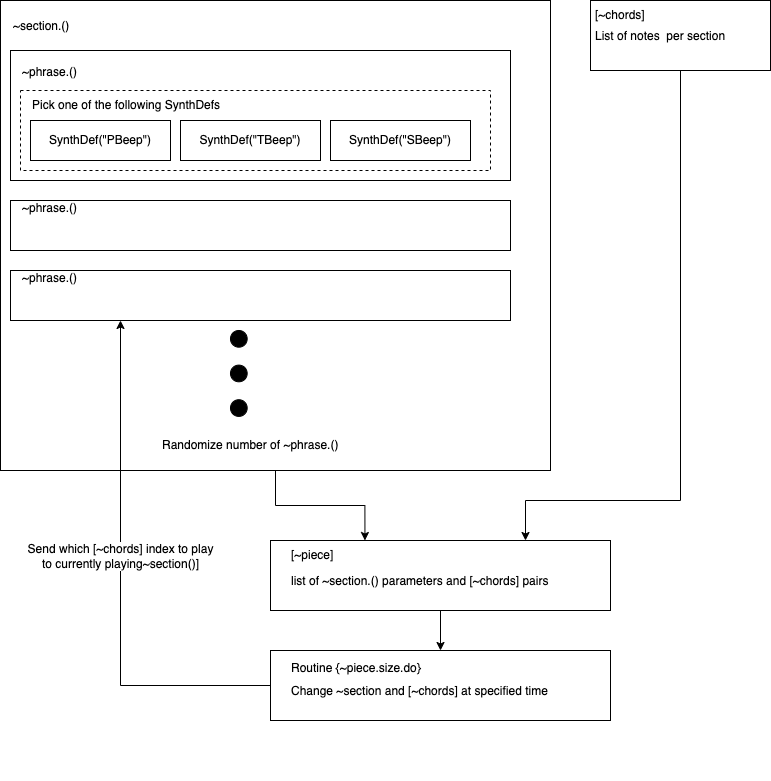Introduction
How much time and energy does a musician spend on an interdisciplinary project? A three-month-long production period does not equal 90+ days of labor. How many days are spent on music, and how many of them are spent on meetings with the collaborators? How much of the music created for the show ends up in the show? I ask myself these questions to better understand the practical role of a music creator in a project involving performing artists of other fields. Answers to these questions require measurable data, such as the total working days and total minutes of music composed. These numbers lead to an insight into the productivity of music creators.
In 2023, Artlab J, Detroit Puppet Company, and I created a one-hour show titled Objects at Play (video link). It was a non-verbal dance and puppet show aimed at young audiences. The first meeting was on February 18, 2023, and the show premiered on May 27, 2023, at the Detroit Film Theatre. I recorded my production process from the start of the project to study my collaboration productivity. I gathered and organized the data according to the numbers I worked and the minutes of music I produced as I composed, recorded, and mixed music. The analysis and statistics revealed that a fraction of the total collaborative period is spent on person-to-person interaction. About two-thirds of the total music communicated with the collaborators ended up in the show.
There are three limitations to this article.
- I am sharing my work process as a solo electronic musician who could compose and share music without other musicians. The workflow described in the following section may not apply to performers or composers of non-electronic genres.
- No similar data were collected from the collaborators of Objects at Play. Comparison of productivity across the discipline was outside the plan.
- The analysis focuses on the practical aspects of collaboration. There will be no aesthetic discussion of Objects at Play.
Data gathering
I used a production diary consisting of a web folder with a session log, screenshots, and photos to record the project’s progress. In the SessionLog text file, I briefly described the work I have done in a workday. Each entry has links to photos of hand-written notes or screenshots of the hard drive folder containing music files used for the project. The screenshots function as a reminder of content changes in music tracks. The Old Versions folder in the screenshots contains obsolete or rejected session files. I kept these files to calculate the amount of music that had not been used at the premiere.
Work Routine
The creative team of me, choreographer Joori Jung of ArtLab J, and theater director Carrie Morris of Detroit Puppet Company shared a Google Drive folder for remote communication and file transfer. The team worked on multiple projects, so daily or weekly meeting was not an option. The list below shows how I worked on the project in this context as a musician.
- The first in-person meeting with Joori and Carrie was on 2/16. The three discussed the overall vision of the piece.
- After meeting #1, I worked on short and independent tracks that could match the to-be-developed scenes.
- I shared nine music tracks with the collaborators via Google Drive before the second meeting.
- At the second meeting on 3/9, Joori and Carrie shared their work-in-progress scenes. The directors also shared current music tracks-to-scene placement.
- After meeting #2, I made five additional tracks. I also revised and expanded the tracks used in the scenes.
- I shared the updated tracks with the collaborators before the third meeting.
- At the third meeting on 4/25, the directors shared new tracks-to-scene placement. The deadline for the final version of the music was set.
- After meeting #3, I made three additional tracks. I continued revising and mixing the tracks to a presentable form.
- I delivered the final versions of the tracks. The directors and performers continued working on the project until the premiere on 5/27, but I did not create more music for the show.
- Separate from the theater premiere, I worked on a 14-track album with edits suited for audio-only release. It was published on Bandcamp a day after the premiere.
Note that I had the aesthetic decisions in creating music, but the directors in charge of movement and stage decided the music’s length, order, and selection. Unlike solo projects, the decisions that drove the project forward were not mine by design.
Data Organization
I organized the information in the production diary into two categories. The first category traces how allocations of the music track to one of the seven scenes change after the collaborator meeting. The second category is statistics on days worked and the amount of music produced.
Tracks-to-Scene Organization
Figure 1 shows how each track I made and shared with the collaborators changed their use throughout the project. The blocks with letters A to Q represent 17 tracks with independent musical themes. I composed the first nine drafts after the first meeting, five after the second meeting, and three more after the third meeting. These tracks were available as separate mp3 files on Google Drive for the choreographer and the theater director.
<Figure 1>
The middle column represents the tracks-to-scene assignment after the second collaborators’ meeting. Four scenes needed new music. The two scenes required a combination of tracks. All tracks needed expansion and revisions in terms of the music’s length and formal development. Note that four out of the nine tracks shared before the second meeting were rejected.
The right column represents a revised tracks-to-scene assignment after the third meeting. It became the final version. Some tracks included in the previous version, such as tracks A and L, ended up being excluded from the show. All but one rejected track after the second meeting came back as a part of Scenes 5 and 6. Track M changed its function from the theme of Scene 6 to the finale of Scene 5.
Productivity Analysis
I measured the amount of work by the days I spent on the project and the length of music created and shared with the directors. There are 102 days from the initial meeting on 2/16 to the album premiere on 5/28. According to the production diary,
- I worked 37 days on this project (36.3% of total project days).
- I met with collaborators in-person for 3 days (8.1% of the working days, 3% of total project days).
- I did not record the minutes I worked on each day, so I cannot calculate the hours I worked on.
In terms of the total amount of music, I gathered the following from screenshots and project files.
- 14 out of 17 tracks made it to the show (82.4%).
- The total amount of music communicated with the collaborators was 11474 seconds consisting of 34 drafts (figure 2).
- The premiere used 3319 seconds of music (figure 3). That is 28.9% of the music communicated with the collaborators.
- The project used a total of 14.1GB in the hard drive. The files were Logic Pro sessions, SuperCollider files, and audio recordings of me playing a melodica.
<Figure 2>
<Figure 3>
Interpretation of the Data
The collaborative process is about quickly adopting and adapting to changes. My role as a music composer was to react to the developing dance and puppetry. It meant constant addition, elimination, and revision. 14 out of 17 tracks making it into the final version looks like a satisfactory rate, but it is less than a third of the music shared with the collaborators. At the same time, once-rejected music can become useful if the circumstances change. Keeping the Old Versions folder intact was a strategically right decision.
I worked on the project for about a third of the total project period and waited for collaborators to develop their part asynchronously to my music production schedule. Waiting is part of the process for musicians in interdisciplinary projects. It is possible to have time to work on a separate project while engaged in a long-term collaboration.
Notice that I did not discuss budget and fees in this article. The amount of time and energy spent on a project does not account for the creator’s previous experience and skill. 30 days I spent on Objects at Play could have been 90 days of work for some or 10 days of work for others. My productivity analysis is not a suggestion for budgeting or calculating artist fees. Its object is to be a reference for a better collaborative practice.

